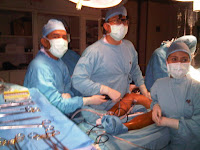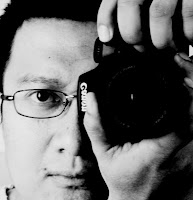Obstacles Faced by the Resident
longer version n more pic in http://dickyscardiothoracicvasco.blogspot.com/
longer version n more pic in http://dickyscardiothoracicvasco.blogspot.com/
I have recently completed my cardiothoracic and vascular surgery (CTVS) residency. It not only taught me the techniques and art of surgery but also enriched me spiritually. T
The details of an ideal resident training programme will always be debated, and it’s not always possible to achieve the ideal. Residents will continue to expect many things from their course of instruction, and the demands of residency training will continue to create obstacles
The details of an ideal resident training programme will always be debated, and it’s not always possible to achieve the ideal. Residents will continue to expect many things from their course of instruction, and the demands of residency training will continue to create obstacles
Various hurdles and obstacles may arise in our lives; these may hinder our path of training. Most of them are either in the form of health and family related issues or at times various aspects of the hard and rigorous training which test the resident’s psychological strength.
Nothing is more relaxing than a good sound sleep. Deprivation of sleep is a big enemy for all residents, but it is the call of the duty that keeps us awake for long hours. Residents should try to have a good sound sleep the night before their call day.
Almost all of us have one or another hobby, but most of us are not able to pursue it.
Reading popular books or magazines on technology of today or special reports on sports have a very positive impact on our thinking and behavior.
During residency which is difficult, demanding and exhausting, when the hours are long and days unpredictable, many times a negative thought comes into our mind. One might question why I chose this endeavor. But then thinking about the challenges, excitement, and rewards that lie ahead will help remind you that the choice was correct.

The whole idea of residency training should be not only to produce the best of surgeons but also the best of ‘humane’ surgeons. Let us all work together to accomplish this goal.
I will always be extremely grateful and thankfull to all my teachers who have always taught me the art and science of this specialty and encouraged me to realize my dreams. Many thanks to my great parents, sweet and caring wife and son, wonderful friends and colleagues, family members and all the staff of the hospital who supported and loved me all throughout my CTVS residency.
Cardiothoracic surgeons are frequently given special respect. They are almost uniformly considered leaders among the surgical specialties. It will be our privilege to touch and mend the heart. The joys of being a Cardiothoracic and Vascular Surgeon will certainly greatly outweigh the frustrations and irritations that lie in the path of becoming one.
longer version n more pic in http://dickyscardiothoracicvasco.blogspot.com/













